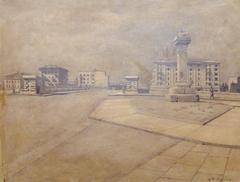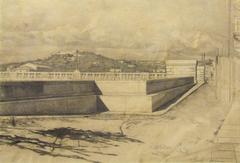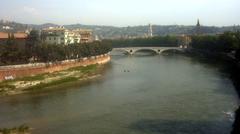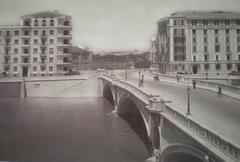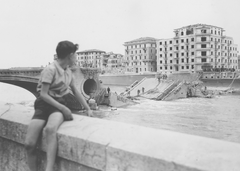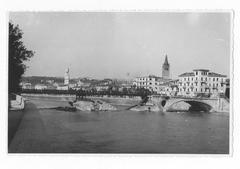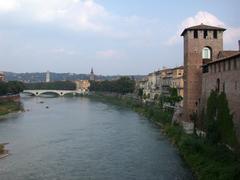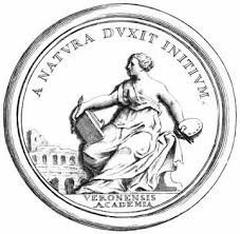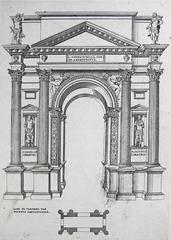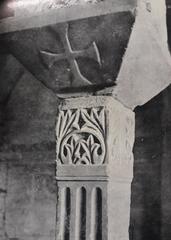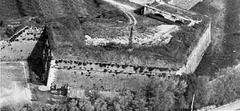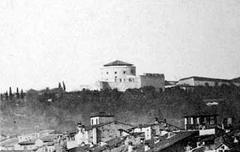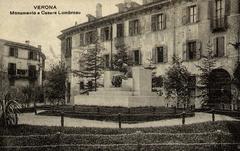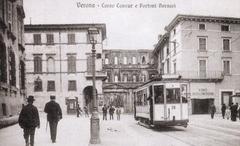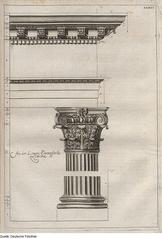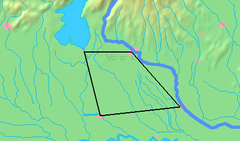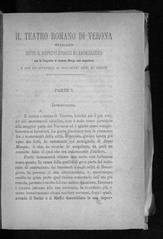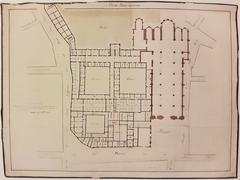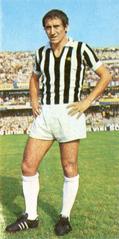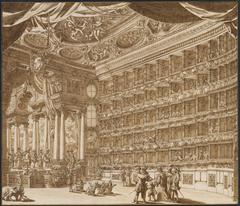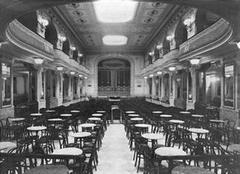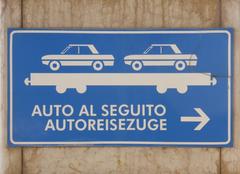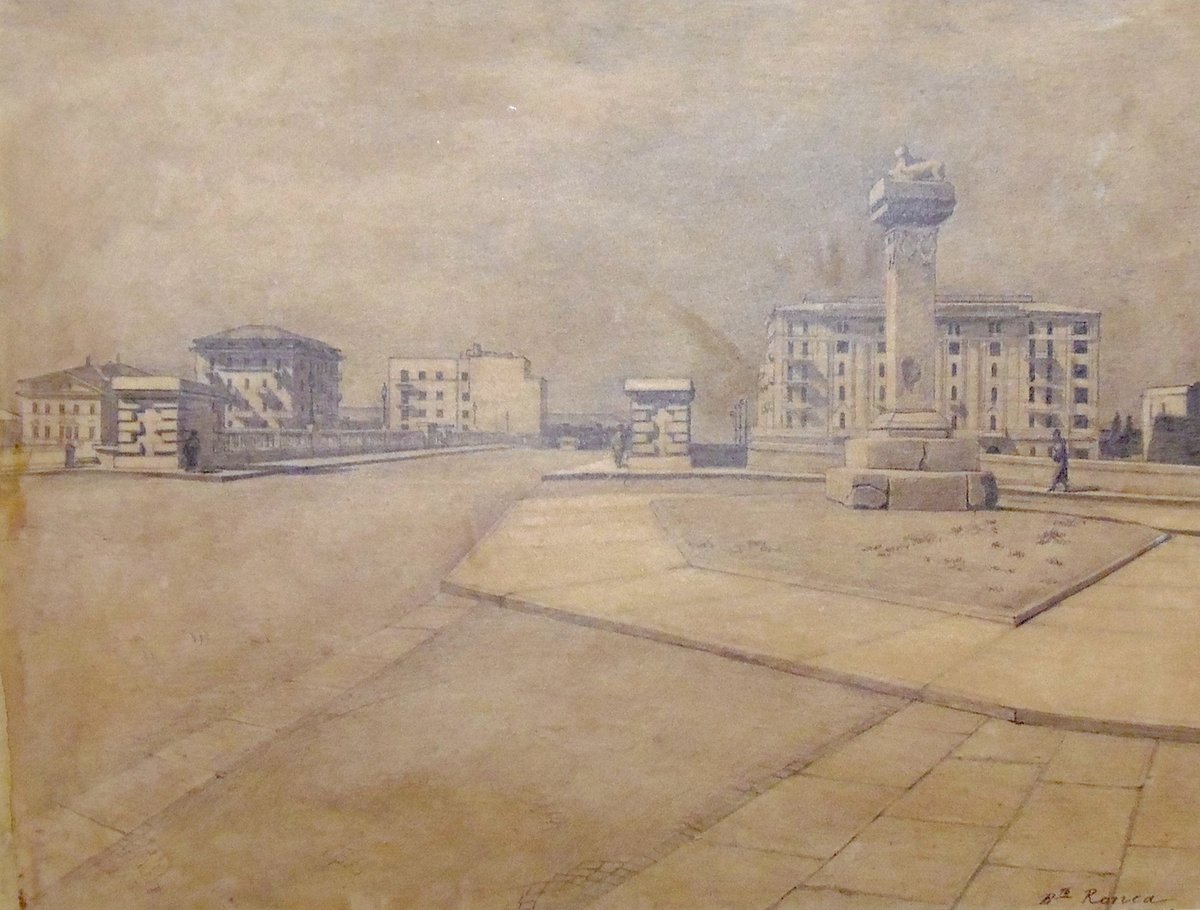
Visiting Ponte della Vittoria in Verona: Hours, Tickets, and Travel Tips
Date: 23/07/2024
Introduction
Ponte della Vittoria, or Victory Bridge, stands as an iconic landmark in Verona, Italy, embodying the city’s rich history and cultural resilience. Constructed between 1928 and 1931, this monumental bridge was built to commemorate Italy’s victory in World War I. Designed by the renowned architect Ettore Fagiuoli, it replaced an earlier structure destroyed during the war, symbolizing both a literal and metaphorical rebuilding of the nation. Spanning the Adige River, Ponte della Vittoria is characterized by its neoclassical and modernist architectural elements, robust stone arches, and intricate decorative features that celebrate Italy’s military achievements (source).
Visiting Ponte della Vittoria offers a unique glimpse into Verona’s past, making it a must-see for history enthusiasts and architecture lovers alike. The bridge is not only a testament to the city’s architectural prowess but also a poignant reminder of the sacrifices made during World War I and World War II. Today, it continues to serve as a focal point for national pride and remembrance, often hosting commemorative events and ceremonies. This guide provides comprehensive information on the bridge’s history, architectural highlights, visitor tips, and nearby attractions to ensure a memorable and enriching experience for all visitors (source).
Table of Contents
- Introduction
- History of Ponte della Vittoria
- Visitor Information
- Nearby Attractions
- Special Events and Tours
- Preservation and Maintenance
- FAQ
- Conclusion
History of Ponte della Vittoria
Early Conception and Construction
The Ponte della Vittoria, or Victory Bridge, in Verona, Italy, stands as a testament to the city’s resilience and historical significance. The bridge was conceived in the aftermath of World War I, a period marked by a strong desire to commemorate the sacrifices and victories of the Italian people. The initial plans for the bridge were drawn up in the early 1920s, with the aim of creating a monumental structure that would symbolize national pride and unity.
Construction of the bridge began in 1928, under the supervision of the renowned engineer Ettore Fagiuoli. The project was ambitious, involving the use of advanced engineering techniques and materials. The bridge was designed to span the Adige River, one of the most significant waterways in northern Italy, which posed considerable challenges due to its width and the need for a stable foundation. The construction process was meticulously planned and executed, with a focus on durability and aesthetic appeal.
Architectural Design and Features
The architectural design of Ponte della Vittoria is a blend of classical and modern elements, reflecting the transitional period in which it was built. The bridge features three main arches, each supported by robust piers anchored deep into the riverbed. The use of reinforced concrete was a relatively new innovation at the time, providing the necessary strength to support heavy traffic while allowing for a more streamlined and elegant design.
One of the most striking features of the bridge is its decorative elements, which include statues and reliefs that celebrate Italy’s military victories. The central arch is adorned with statues of soldiers and allegorical figures, symbolizing bravery, sacrifice, and triumph. These artistic elements were crafted by prominent sculptors of the era, adding a layer of cultural and historical significance to the structure.
Role During World War II
Ponte della Vittoria played a crucial role during World War II, serving as a strategic crossing point over the Adige River. The bridge was heavily utilized by both military and civilian traffic, making it a target for bombing raids. Despite the constant threat of destruction, the bridge remained largely intact throughout the war, thanks to the efforts of local engineers and workers who carried out repairs and maintenance under challenging conditions.
In April 1945, as Allied forces advanced into northern Italy, the bridge was the site of intense fighting between German troops and Italian partisans. The battle for control of the bridge was fierce, with both sides recognizing its strategic importance. Ultimately, the bridge was secured by the partisans, paving the way for the liberation of Verona. The resilience of Ponte della Vittoria during this period further cemented its status as a symbol of endurance and national pride.
Post-War Reconstruction and Modernization
After the war, Ponte della Vittoria underwent significant reconstruction and modernization efforts. The bridge had sustained damage from the fighting and required extensive repairs to restore its structural integrity. The post-war reconstruction was carried out with a focus on preserving the original design while incorporating modern engineering advancements to enhance its durability and functionality.
In the 1950s, the bridge was reinforced with additional concrete and steel supports, ensuring its ability to handle increased traffic loads. The decorative elements were also restored, with careful attention to detail to maintain their historical and artistic value. These efforts were part of a broader initiative to rebuild and modernize Italy’s infrastructure in the wake of the war, reflecting the country’s commitment to progress and renewal.
Visitor Information
For those planning to visit Ponte della Vittoria, here are some practical details:
- Visiting Hours: The bridge is accessible to visitors 24/7, although certain areas may be restricted during maintenance work.
- Tickets: There is no fee required to visit the bridge.
- Best Time to Visit: Early mornings or late afternoons provide the best lighting for photography and fewer crowds.
- Access: The bridge is located in the heart of Verona and is easily accessible by foot, bike, or public transportation.
Nearby Attractions
While visiting Ponte della Vittoria, consider exploring these nearby historical sites:
- Roman Arena: An ancient amphitheater that hosts concerts and operas (Verona Arena).
- Castelvecchio Museum: A fortress that now houses an impressive art collection (Castelvecchio Museum).
- Piazza delle Erbe: A lively market square surrounded by beautiful architecture (Piazza delle Erbe).
Special Events and Tours
Throughout the year, various events and guided tours are available:
- Annual Ceremonies: Commemorations honoring the sacrifices of those who fought for Italy’s freedom.
- Guided Tours: Local guides offer in-depth tours that cover the bridge’s history and significance.
- Photography Tours: Specialized tours focusing on capturing the best angles and lighting of the bridge.
Preservation and Maintenance
Maintaining the structural and aesthetic integrity of Ponte della Vittoria is an ongoing effort. The bridge is regularly inspected and maintained by the local authorities, with a focus on preserving its historical features while ensuring its safety and functionality. Recent preservation efforts have included the cleaning and restoration of the statues and reliefs, as well as the reinforcement of the bridge’s foundations to protect against erosion and environmental damage.
In addition to these measures, the bridge is also monitored for traffic and environmental impacts, with initiatives in place to manage congestion and reduce pollution. These efforts are part of a broader commitment to sustainable urban development, ensuring that Ponte della Vittoria remains a cherished and functional part of Verona’s landscape for generations to come.
FAQ
- What are the visiting hours for Ponte della Vittoria? The bridge is accessible 24/7.
- How do I get tickets for Ponte della Vittoria? No tickets are required; visiting the bridge is free.
- What are the best nearby attractions in Verona? Nearby attractions include the Roman Arena, Castelvecchio Museum, and Piazza delle Erbe.
Conclusion
Ponte della Vittoria is more than just a bridge; it is a symbol of Verona’s resilience, history, and cultural heritage. From its conception in the post-World War I era to its role in World War II and its ongoing preservation, the bridge stands as a testament to the enduring spirit of the city and its people. Visitors to Verona can appreciate not only the architectural beauty of the bridge but also the rich history and significance it represents.
For more information and updates, follow us on social media or check out our other articles on Verona’s historical sites.
References
- Exploring Ponte della Vittoria - History, Visiting Hours, and Must-See Features in Verona, 2024, Author (Verona Arena)
- Visiting Ponte della Vittoria in Verona - Historical Significance, Visiting Hours, and Travel Tips, 2024, Author (Castelvecchio Museum)
- Ultimate Guide to Visiting Ponte della Vittoria, Verona - Hours, Tickets, and Tips, 2024, Author (Bugiardo)
